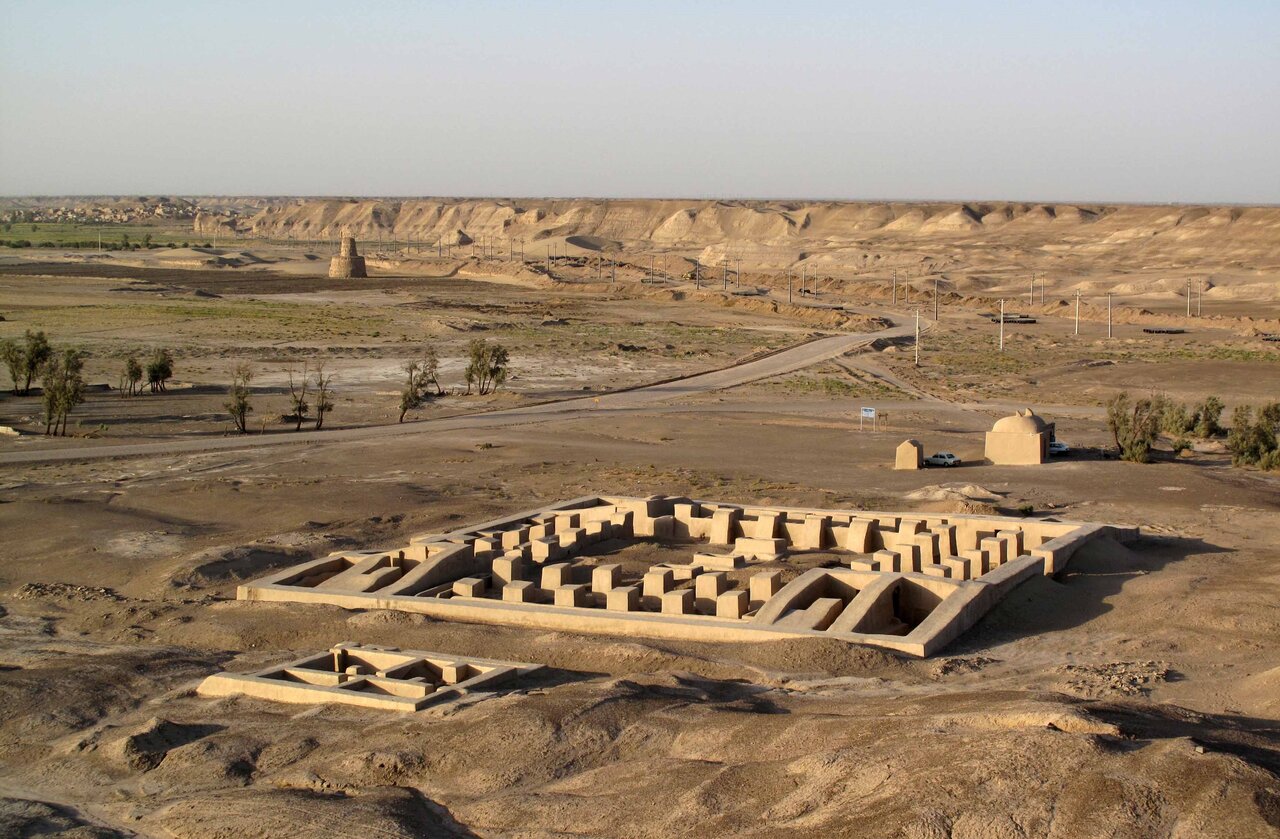‘Gateway of Slaves’ gives clues about prehistorical urbanization in Achaemenid Iran

TEHRAN - Dahana-ye Gholaman — literary translated into “Gateway of Slaves” — is an extraordinary destination in southeast Iran that beckons to history enthusiasts and keen sightseers alike.
This historically significant site offers a compelling journey back in time, shedding light on the nation's complex past that led an urban development during the Achaemenid era (c. 550-330 BC).
Dahana-ye Gholaman holds immense historical importance as it was once an Achaemenid town, which has yielded public buildings and local elements, noticeable especially in the valuable documentation of domestic architecture.
The site is located some two km straight south of the village of Qale-Now ca. 30 km southeast of Zabol in Sistan-Baluchestan province, on a basin originally formed by the waters of the Helmand river, very close to the Afghan frontier.
The archeological site was discovered in 1960 by Umberto Scerrato of the Italian archeological mission.
The excavations, directed by Scerrato, commenced in 1962 and continued until the end of 1966 under the auspices of the Istituto Italiano per il Medio ed Estremo Oriente (IsMEO).
According to Iranica, they revealed an urban settlement of considerable proportions, certainly far more extensive than the architectural remains that have been uncovered. “It is a unique survival from the Achaemenid period and is notable not only for its size but also for its internal differentiation by function, reflected in the presence of large public buildings and an extensive residential area.”
Another Achaemenid settlement in the area, located in the eastern and Afghan part of the province was excavated by Roman Ghirshman. Although they did not share similar features at first, a comparative study of pottery from the two sites shows these obvious similarities.
The Achaemenid Empire stretched from the Balkans to Central Asia at its peak. It was reportedly the first state model based on diversity and tolerance of different cultures and religions.Combined with other cultural items, including seals, arrowheads, building plans, and potteries from other sites in Afghanistan Sistan, archaeologists make it possible to pinpoint the foundation of Dahan-e Gholaman to the 6th or the beginning of the 5th century BC.
As mentioned by the prestigious Encyclopedia, the size of the inhabited area that has been found is remarkable: 1.5 km long from east to west and 300 to 800 m wide. Archaeological excavations have revealed that the city was founded according to a unified plan, and have also identified at least two major stages of construction.
“The excavated buildings, constructed of mud brick and pise on a flat terrace below the desert floor, are distinguished by an absence of stratigraphy.”
Studies conducted on the ancient complex, as a whole, propose that the urban foundation was laid out according to a well-defined plan and literally built in the wilderness, inhabited for a brief period (a century or a century and a half), and then abandoned due to natural forces associated with the arid atmosphere of Sistan.
In fact, the site, even in its heyday, suffered from the instability of the delta and the resulting inevitable changes in irrigation canals, sometimes disastrous flooding in Helmand, and salinization of the soil.
Estimated to spread over about 100 hectares, the residential area is divided into two parts by a terrace. To the west, structures line an old canal, the road of which can still be tracked; it must have crossed another north-south canal, separating the eastern part of the city.
Another significance of Dahan-e Gholaman concerning the Achamenid Empire is a combination of “imperial” elements, identified in the public buildings, and local elements, which were brought to light during rounds of excavation.
Together, such elements, which are both unique and characteristic, confirm the fundamental importance of the site for tracing the origins and evolution of urban settlement on the Persian plateau during the Achaemenid period.
The Achaemenid Empire stretched from the Balkans to Central Asia at its peak. It was reportedly the first state model based on diversity and tolerance of different cultures and religions.
AFM
Leave a Comment